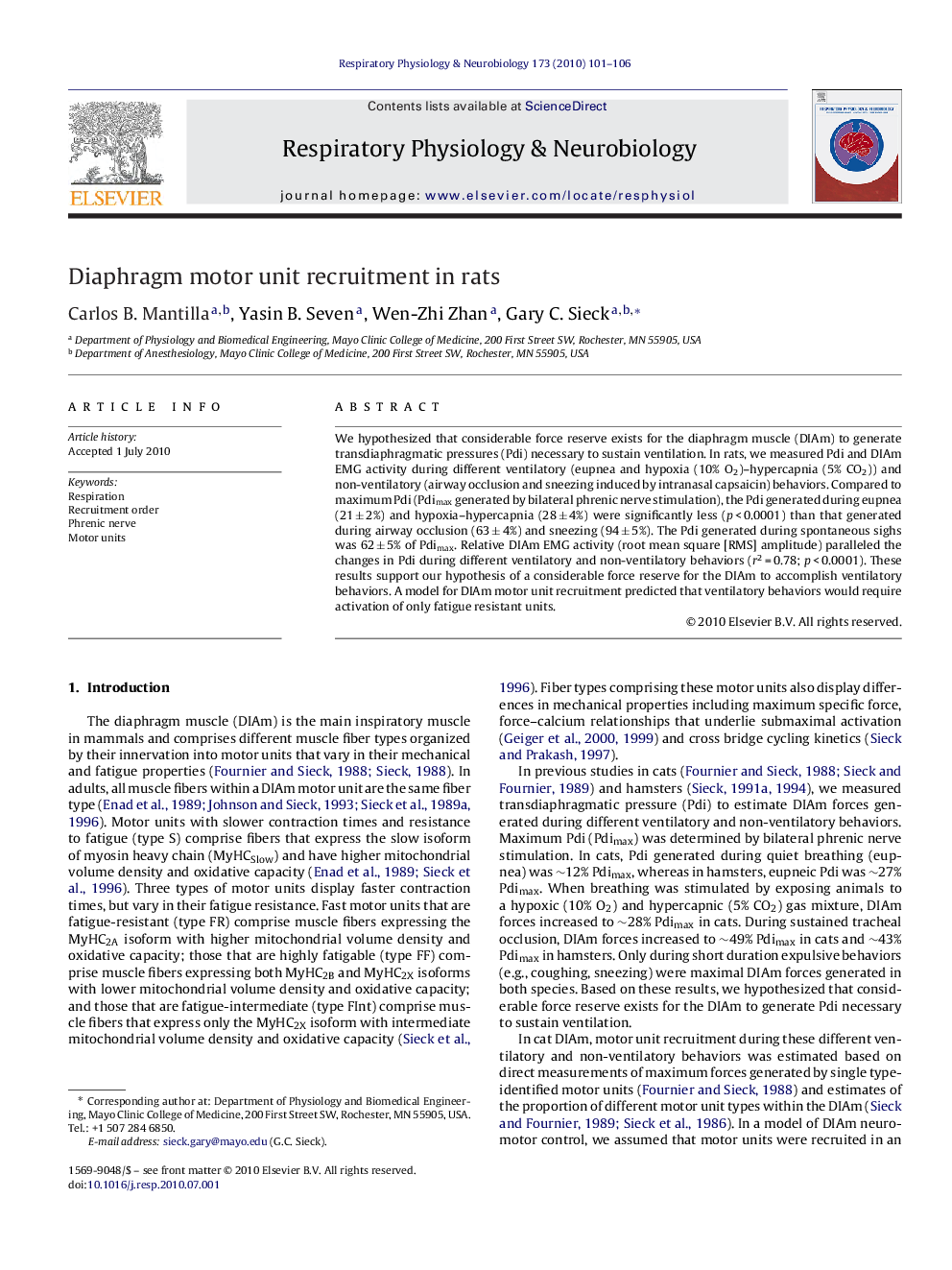| Article ID | Journal | Published Year | Pages | File Type |
|---|---|---|---|---|
| 2847656 | Respiratory Physiology & Neurobiology | 2010 | 6 Pages |
We hypothesized that considerable force reserve exists for the diaphragm muscle (DIAm) to generate transdiaphragmatic pressures (Pdi) necessary to sustain ventilation. In rats, we measured Pdi and DIAm EMG activity during different ventilatory (eupnea and hypoxia (10% O2)–hypercapnia (5% CO2)) and non-ventilatory (airway occlusion and sneezing induced by intranasal capsaicin) behaviors. Compared to maximum Pdi (Pdimax generated by bilateral phrenic nerve stimulation), the Pdi generated during eupnea (21 ± 2%) and hypoxia–hypercapnia (28 ± 4%) were significantly less (p < 0.0001) than that generated during airway occlusion (63 ± 4%) and sneezing (94 ± 5%). The Pdi generated during spontaneous sighs was 62 ± 5% of Pdimax. Relative DIAm EMG activity (root mean square [RMS] amplitude) paralleled the changes in Pdi during different ventilatory and non-ventilatory behaviors (r2 = 0.78; p < 0.0001). These results support our hypothesis of a considerable force reserve for the DIAm to accomplish ventilatory behaviors. A model for DIAm motor unit recruitment predicted that ventilatory behaviors would require activation of only fatigue resistant units.
